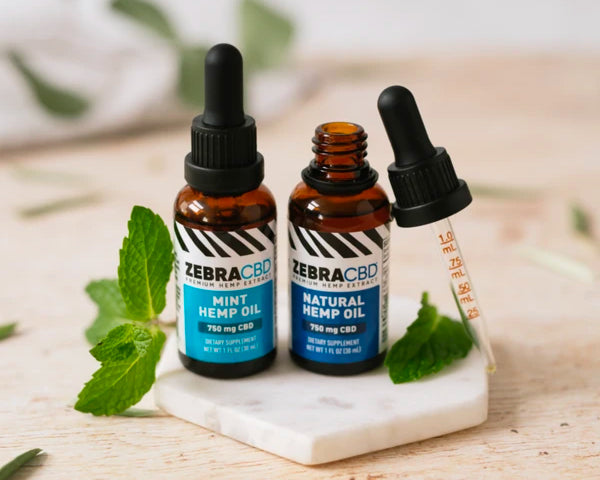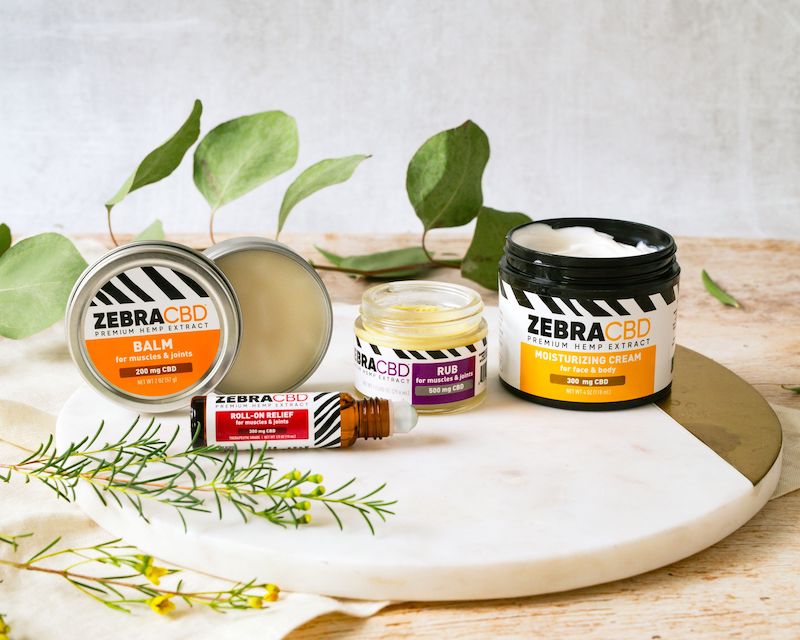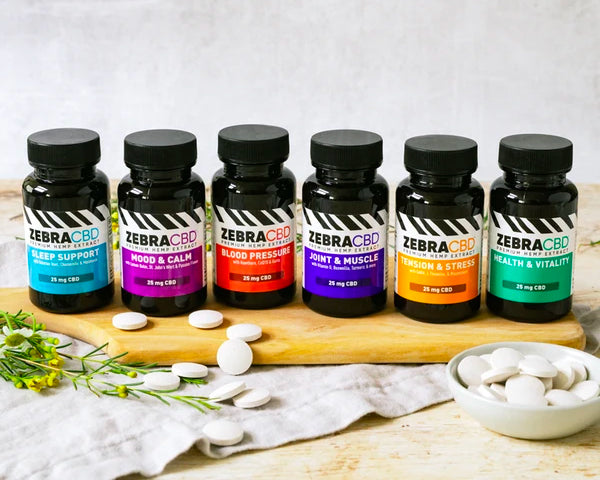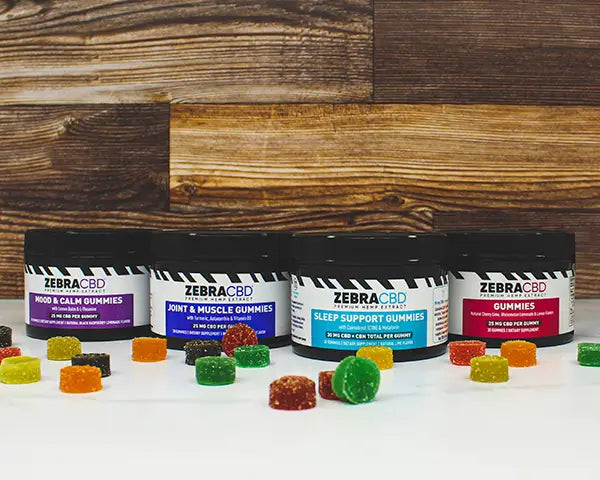
Many pet owners ask about CBD's safety for dogs. Research looks promising. A recent study shows that CBD helped reduce pain in over 80% of dogs with osteoarthritis. Still, there's a lot we need to learn before giving it to our pets.
CBD products for dogs have gained popularity, and vets suggest starting with 1-2 mg for every 10 pounds of your dog's weight. But quality control remains a big issue. Scientists tested 29 CBD pet products and found that only 10 matched their labeled strength within 10%. Even worse, they detected dangerous heavy metals in four products.
Pet owners report that CBD helps their dogs with anxiety, pain, and inflammation. The science behind these claims still needs more research. The American Veterinary Medical Association hasn't made official recommendations yet due to limited evidence. This piece will guide you through CBD's known safety profile, benefits, and tips to pick quality products if you want to try this supplement for your dog.
What every dog owner should know about CBD
Pet parents ask many questions about CBD these days. Let's learn what CBD is and why more people give it to their pets before you think over using it for your furry friend.
CBD basics: where it comes from
CBD (cannabidiol) comes from hemp plants, which are a variety of Cannabis sativa. Hemp differs from marijuana because farmers grow it to have very low THC levels. The process creates CBD oil that works with the endocannabinoid system found in all mammals—your dog included.
This system plays a vital role in keeping your pet's body balanced. It affects their mood, pain perception, appetite, and immune response. The system also helps control inflammation and skin health. This explains why many pet owners see improvements in these areas.
How it's different from marijuana
The biggest difference between CBD products and marijuana shows up in their THC content. THC (tetrahydrocannabinol) creates the "high" feeling that marijuana gives. CBD works differently—it won't make your dog high.
The law says CBD products must have less than 0.3% THC to be called hemp. This small amount gives potential health benefits without making pets intoxicated. You won't need to worry about THC toxicity with properly made CBD products.
The numbers tell an interesting story: by 2023, almost 29% of pet owners had given CBD to their pets. This shows how much these products have gained acceptance.
Why it's gaining popularity in pet care
Research backs up CBD's rising popularity with pets. A Cornell study found that more than 80% of dogs with osteoarthritis felt less pain when using CBD. These dogs moved more easily and felt more comfortable. Another study showed that 89% of dogs had fewer seizures with CBD treatment.
CBD helps with more than just pain. Many pet owners use it to help their anxious pets calm down. A Cornell study found that 83% of dogs showed fewer signs of anxiety when they got CBD chews before stressful situations.
The market for CBD pet products tells this success story in numbers. It jumped from $32 million in 2018 to $400 million in 2019. Note that while CBD shows promise, research continues and product quality remains the most important concern.
Understanding CBD safety and potential risks
Safety has become a top priority as CBD products become popular in pet care. Research shows that our knowledge about CBD safety for dogs keeps growing with each new study.
Why there's no one-size-fits-all answer
The U.S. Food and Drug Administration hasn't approved CBD for dogs or created official dosing guidelines. Pet owners find it challenging to determine the right amounts because of this regulatory gap. Dogs respond differently to CBD based on their weight, age, and overall health.
Studies show CBD appears safe in healthy dogs. Scientists still need to complete their research about long-term effects on liver function and other systems. Quality control remains a big concern. A troubling study revealed that up to 56% of pet CBD products were mislabeled. This makes it hard to give consistent doses.
Possible interactions with medications
CBD's effect on other medications your dog takes needs careful attention. Your dog's body breaks down CBD using cytochrome P450 enzymes. These same enzymes process about 60% of prescribed medications. This means CBD could change how other drugs work in your dog's system.
Watch out for these medications:
-
Anti-seizure drugs and pain medications
-
Blood thinners and heart medications
-
Antibiotics and antifungals
-
Anxiety medications and sedatives
Talk to your vet about possible drug interactions before giving CBD to your dog, especially if they take other medications.
Recognizing signs of sensitivity or overdose
Serious CBD reactions don't happen often. You should know what to look for to keep your dog safe. The first signs of sensitivity might show up as:
Most dogs experience mild and temporary side effects like dry mouth (increased thirst), drowsiness, and slight digestive issues.
Rare cases of major overdose might cause severe lethargy, vomiting, diarrhea, or wobbly walking. Stop giving CBD and call your vet if you notice these symptoms.
CBD has a better safety profile than THC. Most dogs recover without problems from accidental overconsumption within 24 hours. Start with 1-2 mg per 10 pounds of body weight and watch your dog carefully when first using CBD [link_3].
How to use CBD responsibly with your dog
CBD treatment for your dog requires a measured approach that starts with proper usage understanding. Studies show successful outcomes depend on vet guidance, careful introduction, and regular monitoring.
Discussing CBD with your vet
Your veterinarian must approve any CBD regimen before starting your dog on it. This approval matters because CBD interacts with the cytochrome enzyme system that metabolizes various medications. Your vet will provide tailored guidance based on your dog's weight, breed, and health conditions.
Legal restrictions prevent veterinarians from discussing CBD in some states. You can ask general questions about cannabinoids instead of mentioning specific brands if this applies to your area.
How to introduce CBD into your dog's routine
Your dog's response determines the right dose, so start conservatively. Studies recommend beginning with 0.1 to 0.2 mg per kilogram of your dog's weight twice daily. This careful method reduces adverse reaction risks.
These practical tips help achieve better results:
-
Give the daily dosage in two parts, 6-8 hours apart
-
Give CBD right before scheduled feeding to improve absorption
-
Mix CBD oil with food when your dog refuses direct administration
Tips for tracking effects and adjusting use
CBD needs 3-5 days to show its original effects, and optimal results appear after two weeks of regular use. Watch your dog's response during this time.
A simple log of dosage, timing, and your dog's reactions helps during follow-up vet visits. The dosage might need a gradual increase if no changes appear after 30 days of consistent use.
Reduce the amount if you notice lethargy or soft stools. Research indicates liver function needs monitoring, especially when dogs take other liver-metabolized medications. Note that missing occasional doses won't cause major problems—just resume the regular routine the next day.
What makes a high-quality CBD product?
The search for a trustworthy CBD product demands attention to several crucial factors. The current unregulated market shows dramatic quality variations among products. A study revealed that just 44% of tested pet CBD products actually contained their advertised CBD amount.
The importance of transparency and testing
Quality CBD manufacturers make Certificates of Analysis (COAs) available from independent laboratories that test each product batch. These external tests confirm both potency and purity. The results show that products don't contain harmful substances like pesticides, heavy metals, or microbial growth.
The data shows that 25% of CBD brands skip purity testing entirely. Your pet's safety depends on choosing companies that make their test results readily available through their website, QR codes on packaging, or direct requests.
How to read a CBD product label
A reliable label must show:
-
The exact CBD content per serving
-
The product type: full-spectrum, broad-spectrum, or isolate
-
The carrier oil type (usually MCT, olive, or hempseed oil)
-
Batch or lot numbers that track quality
-
Expiration dates
Products that list only "hemp seeds" or "hemp seed oil" without mentioning cannabidiol or hemp extract deserve extra scrutiny - they lack actual CBD. The "organic" label should come with proper certification, preferably USDA Organic.
Avoiding misleading claims and low-quality products
Watch out for these warning signs:
-
Prices that seem too good (quality CBD needs proper growing, extraction, and testing)
-
Unrealistic health claims (CBD cannot legally promise to treat or cure diseases)
-
No third-party test results available
-
"Full-spectrum" labels on products without THC
Price shouldn't be the only factor in your decision - quality assurance and transparency matter more. Zebra CBD Oil for Dogs (https://zebracbd.com/collections/cbd-oil-for-dogs) provides detailed third-party testing data and clear information about ingredients and potency.
Liquid CBD oil offers more precise dosing and better value than treats. Your four-legged friend deserves a safe and effective product. The right choice comes from focusing on quality and transparency.








